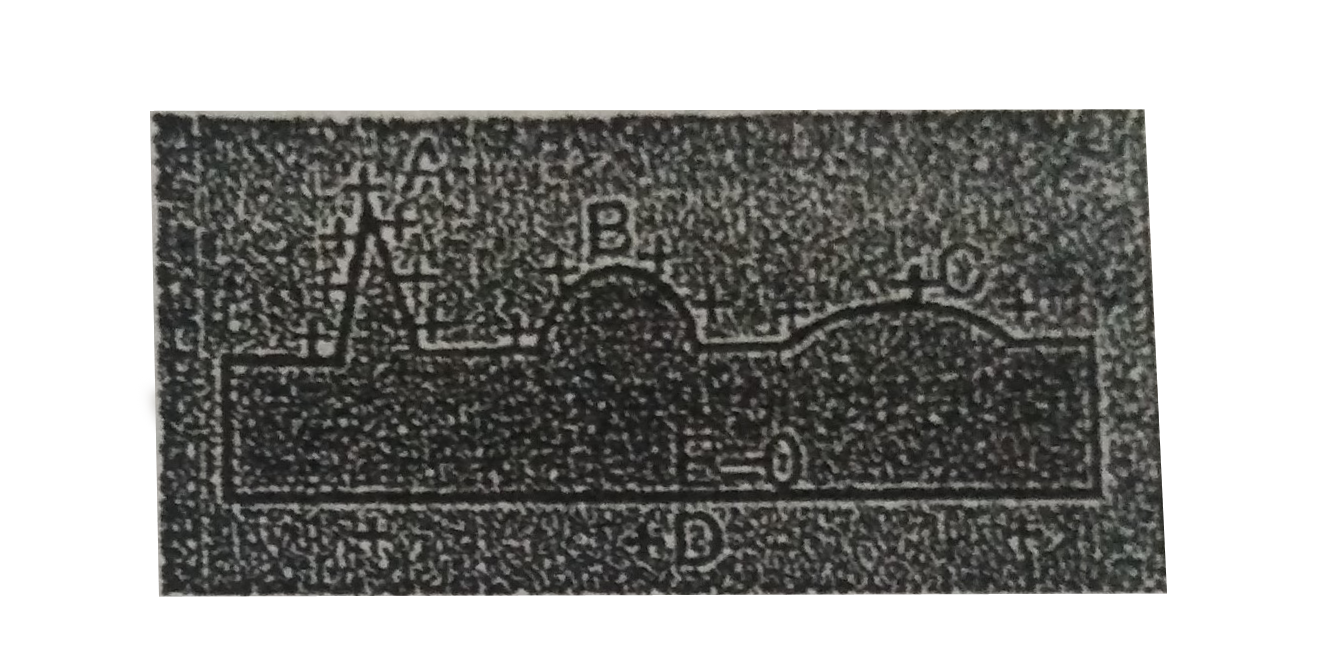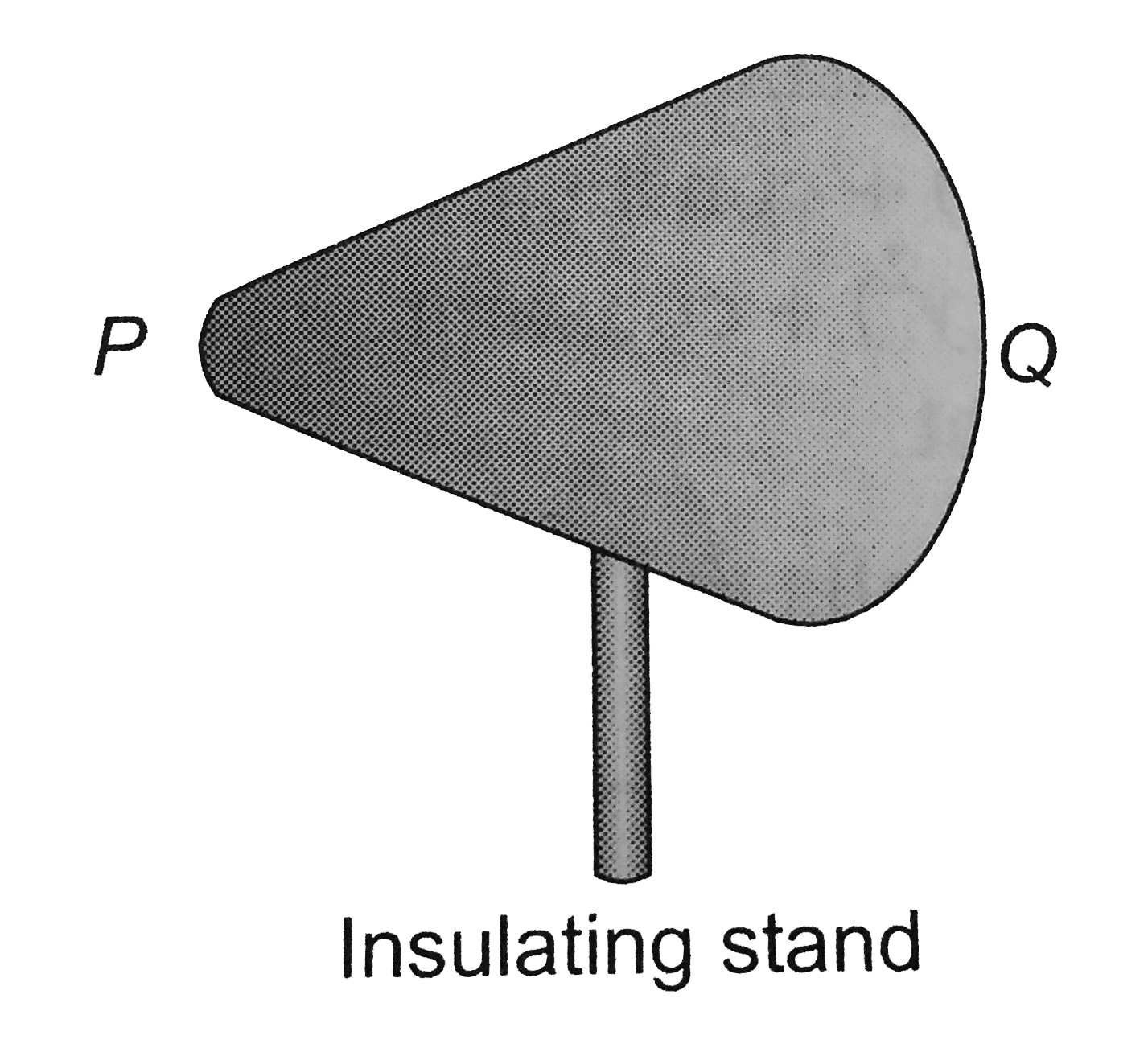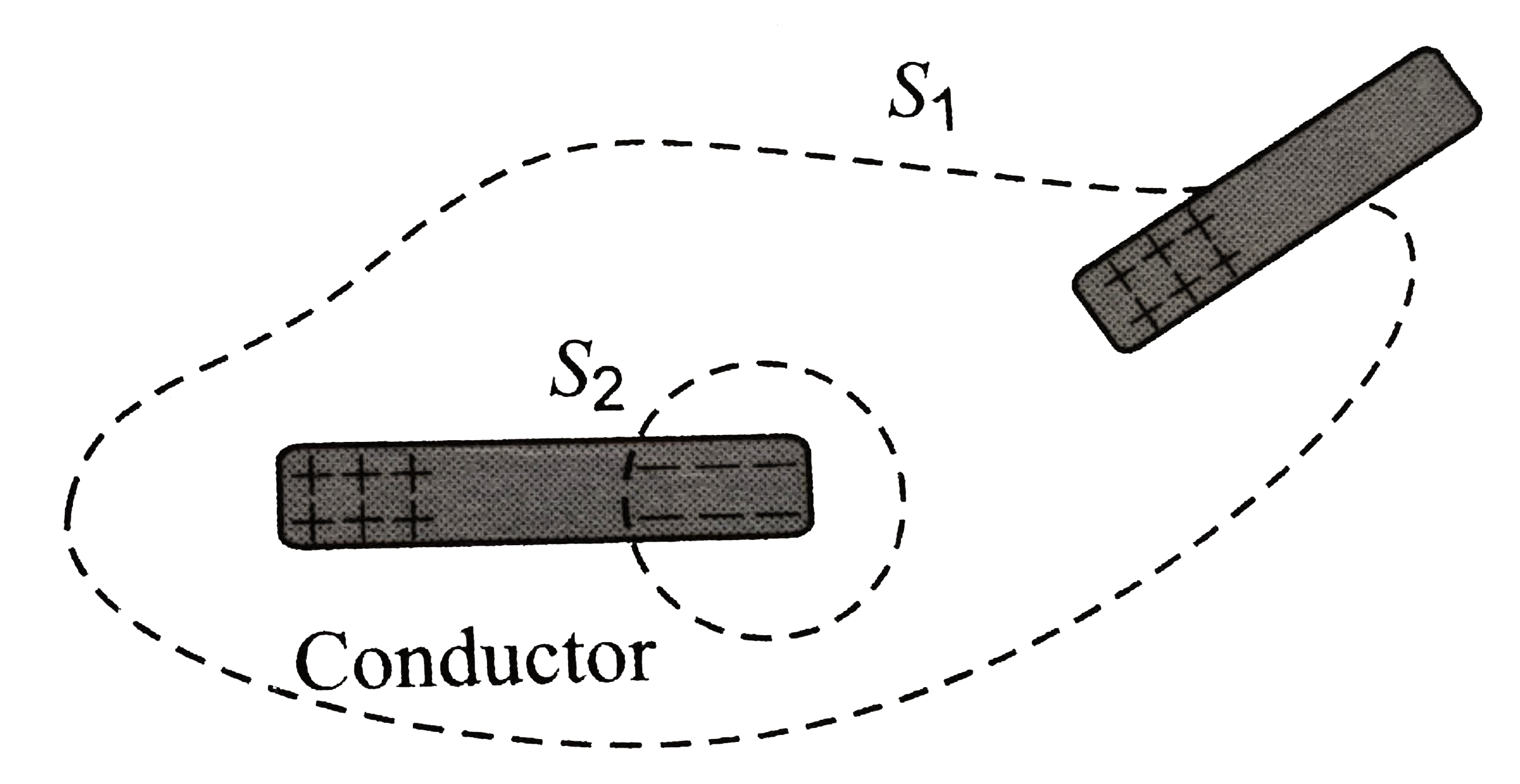A person standing on an ainsulating stool touches a charged insulatd conductor. Will the conductor get completely discharged?
To determine whether a charged insulated conductor will get completely discharged when a person standing on an insulating stool touches it, we can analyze the situation step by step.
1. Understanding the Setup:
- The person is standing on an insulating stool, which means that the stool does not allow electric charge to flow through it.
- The conductor is charged and insulated, meaning it is not connected to the ground or any other conductive path.
2. Potential Difference:
- When the person touches the charged conductor, there is a potential difference between the person (and the stool) and the conductor.
- Charge will flow from the conductor to the person until both reach the same electric potential.
3. Insulating Properties:
- Since the stool is insulating, it does not provide a path for the charge to flow to the ground.
- Therefore, the charge can only flow until the potential of the person and the conductor equalizes.
4. Charge Flow:
- The charge will flow from the conductor to the person until they reach the same potential. However, this does not mean that all the charge from the conductor will leave it.
- The flow of charge will stop when the potential difference is zero, which occurs before the conductor is completely discharged.
5. Conclusion:
- Since the stool is insulating and does not allow for a complete discharge path to the ground, the conductor will not get completely discharged.
- It will retain some of its charge after the person touches it.
Final Answer:
No, the conductor will not get completely discharged because the person is standing on an insulating stool, which prevents the charge from flowing to the ground.
---
- The person is standing on an insulating stool, which means that the stool does not allow electric charge to flow through it.
- The conductor is charged and insulated, meaning it is not connected to the ground or any other conductive path.
- When the person touches the charged conductor, there is a potential difference between the person (and the stool) and the conductor.
- Charge will flow from the conductor to the person until both reach the same electric potential.
- Since the stool is insulating, it does not provide a path for the charge to flow to the ground.
- Therefore, the charge can only flow until the potential of the person and the conductor equalizes.
- The charge will flow from the conductor to the person until they reach the same potential. However, this does not mean that all the charge from the conductor will leave it.
- The flow of charge will stop when the potential difference is zero, which occurs before the conductor is completely discharged.
- Since the stool is insulating and does not allow for a complete discharge path to the ground, the conductor will not get completely discharged.
- It will retain some of its charge after the person touches it.
No, the conductor will not get completely discharged because the person is standing on an insulating stool, which prevents the charge from flowing to the ground.
Topper's Solved these Questions
- COULOMB LAW AND ELECTRIC FIELDBOOK - CENGAGE PHYSICS ENGLISHCHAPTER - COULOMB LAW AND ELECTRIC FIELDEXERCISE - Subjective Type
15 Videos
- COULOMB LAW AND ELECTRIC FIELDBOOK - CENGAGE PHYSICS ENGLISHCHAPTER - COULOMB LAW AND ELECTRIC FIELDEXERCISE - Subjective
32 Videos
- COULOMB LAW AND ELECTRIC FIELDBOOK - CENGAGE PHYSICS ENGLISHCHAPTER - COULOMB LAW AND ELECTRIC FIELDEXERCISE - Solved examples
10 Videos
- CENGAGE PHYSICS DPPBOOK - CENGAGE PHYSICS ENGLISHCHAPTER - CENGAGE PHYSICS DPPEXERCISE - subjective type
51 Videos
- ELECTRIC CURRENT & CIRCUITSBOOK - CENGAGE PHYSICS ENGLISHCHAPTER - ELECTRIC CURRENT & CIRCUITSEXERCISE - Kirchhoff s law and simple circuits
15 Videos
Similar Questions
Across the surface of a charged conductor, the electric
View SolutionProve that, if an insulated, uncharged conductor is placed near a charged conductor and no other conductors are present, the uncharged body must be intermediate in potential between that of the charged body and that of infinity.
View SolutionIf a charged body is placed near a neutral conductor, will it attract the conductor or repel it ?
View SolutionFind the relation between drift velocity and relaxation time of charge carriers in a conductor .
A conductor of length L is connected to a d.c source of emf 'E' . If the length of the conductor is tripled by stetching it, keeping 'E' constant , explain how its drift velocity would be affected.
View SolutionA point charge Q is situated (outside) at a distance r from the centre of an uncharged conducting solid sphere of radius R. The potential due to induced charges (on the conductor) at a point B inside the conductor whose distance form the point charge is d is ______
View SolutionSome charge is being given to a conductor. Then its potential : -
View SolutionWhen we charge a conductor, we are raising or lowering its potential.
View SolutionIn the following figure an isolated charged conductor is shown. The correct statement will be -

View SolutionFigure shown a charged conductor resting on an insulating stand. If at the point P the charge density is σ, the potential is V and the electric field strength is E, what are the values of these quantities at point Q ?

View SolutionCharge on an originally uncharged conductor is separated by holding a positively charged rod very closely nearby, as shown in figure. Assume that the induced negative charge on the conductor is equal to the positive charge q on the rod. Then the flux through surface S1 is

View Solution
